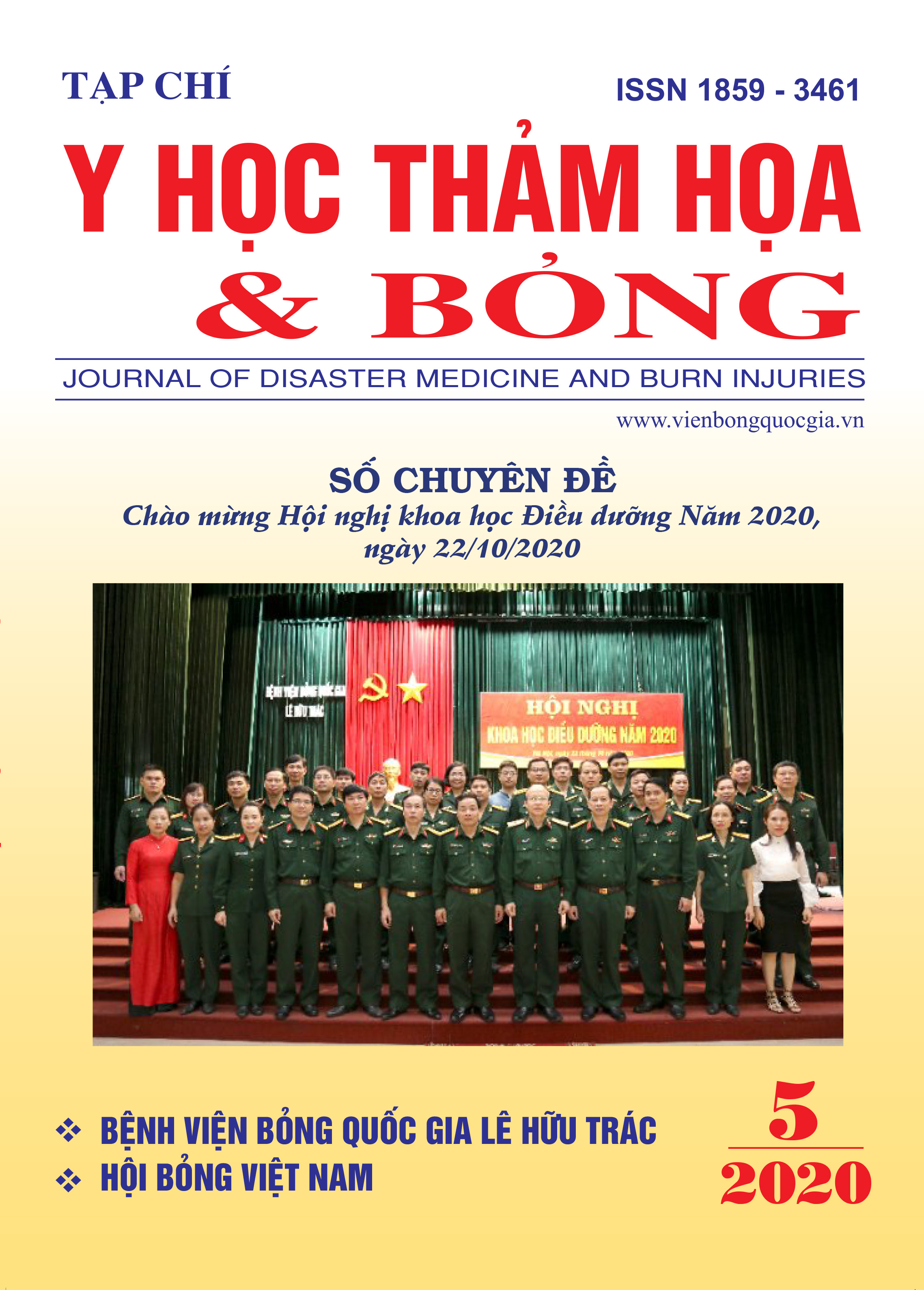Evaluating the knowledge of nurses about the prevention, diagnosis and resolution with anaphylaxis at the Le Huu Trac National Burn Hospital 2020
Main Article Content
Abstract
Objective: Evaluating the Hospital's knowledge about anaphylaxis prevention, diagnosis and treatment.
Method: Cross-sectional description and pre-intervention after interviewing over 90 nurses in clinical departments from May to September 2020.
Results: The proportion of nurses with knowledge of anaphylaxis prevention, diagnosis and management was 52% of the nurses correctly answered the concept of anaphylaxis, 64.4% of nurses knew about the causes of anaphylaxis 21.1% of nurses listed 5 main groups of symptoms of anaphylactic shock degree II.8.9% correctly listed symptoms suggestive of anaphylaxis. 94.4% know that it is necessary to stop exposure to allergens when a shock is detected, but the patient's head low and monitor vital signs every 3-5 minutes. 90.0% of nurses know the dose of adrenalin injection .74.7% of nurses know It is necessary to monitor the patient 24 hours after the patient is stable. 43.3% of nurses know all three measures to prevent anaphylaxis.
Conclusion: Nursing awareness about anaphylaxis still has many shortcomings, training on this issue is urgent and long-term.
Article Details
Keywords
Knowledge of prevention and management of anaphylaxis, National Burn Hospital
References
2. Bộ Y tế (2004), Hướng dẫn quy trình chăm sóc người bệnh, Tập 2, Kỹ thuật test lẩy da, Hà Nội, Tr. 57-60.
3. Bộ Y Tế (2017), Thông tư số 51/2017/TT-BYT ngày 29/12/2017 hướng dẫn phòng, chẩn đoán và xử trí phản vệ.
4. Bệnh viện Bạch Mai (2011), Hướng dẫn chẩn đoán và điều trị bệnh nội khoa, Sốc phản vệ, Hà Nội, Tr.102-104.
5. Bệnh viện Bắc Thăng Long (2013), Báo cáo đánh giá công tác 6 tháng đầu năm và kế hoạch quý III năm 2013, Hà Nội.
6. Nguyễn Thanh Vân (2013), “Đánh giá kiến thức phòng và cấp cứu sốc phản vệ của điều dưỡng Bệnh viện Bắc Thăng Long năm 2013, Hội nghị khoa học quốc tế điều dưỡng, Tr 22 - 27.
7. Hoàng Văn Sáng (2012), “Mô tả kiến thức của điều dưỡng trong phòng và cấp cứu sốc phản vệ tại Bệnh viện 354”, Khóa luận tốt nghiệp cử nhân ĐD, Trường Đại học Thăng Long.
8. Tạ Thị Anh Thơ (2010), “Đánh giá kiến thức của ĐD trong việc xử trí và chăm sóc bệnh nhân sốc phản vệ tại các khoa lâm sàng bệnh viện K”, Nghiên cứu y học, Tập 14, Tr 25 - 29.
9. Trường Đại học Y Hà Nội (2001), Miễn dịch đại cương, Quá mẫn, Tr.135-184.
Tài liệu tiếng Anh
10. Decker WW, Campbell RL, Manivannan V et al. The etiology and incidence of anaphylaxis in Rochester, Minnesota: a report from the Rochester Epidemiology Project. The Journal of allergy and clinical immunology 2008; 122: 1161-5.
11. Sheikh A, Hippisley-Cox J, Newton J, Fenty J. Trends in national incidence, lifetime prevalence and adrenaline prescribing for anaphylaxis in England. Journal of the Royal Society of Medicine 2008; 101: 139-43.
12. Ring J, Blaser K, Capron M et al. Anaphylaxis. Chemical Immunology and Allergy 2010; 95: 3-4.
13. Liew WK, Williamson E, Tang ML. Anaphylaxis fatalities and admissions in Australia. The Journal of allergy and clinical immunology 2009; 123: 434-442.
14. Simons FE, Ardusso LR, Bilo MB et al. World allergy organization guidelines for the assessment and management of anaphylaxis. The World Allergy Organization journal 2011; 4: 13-37.


